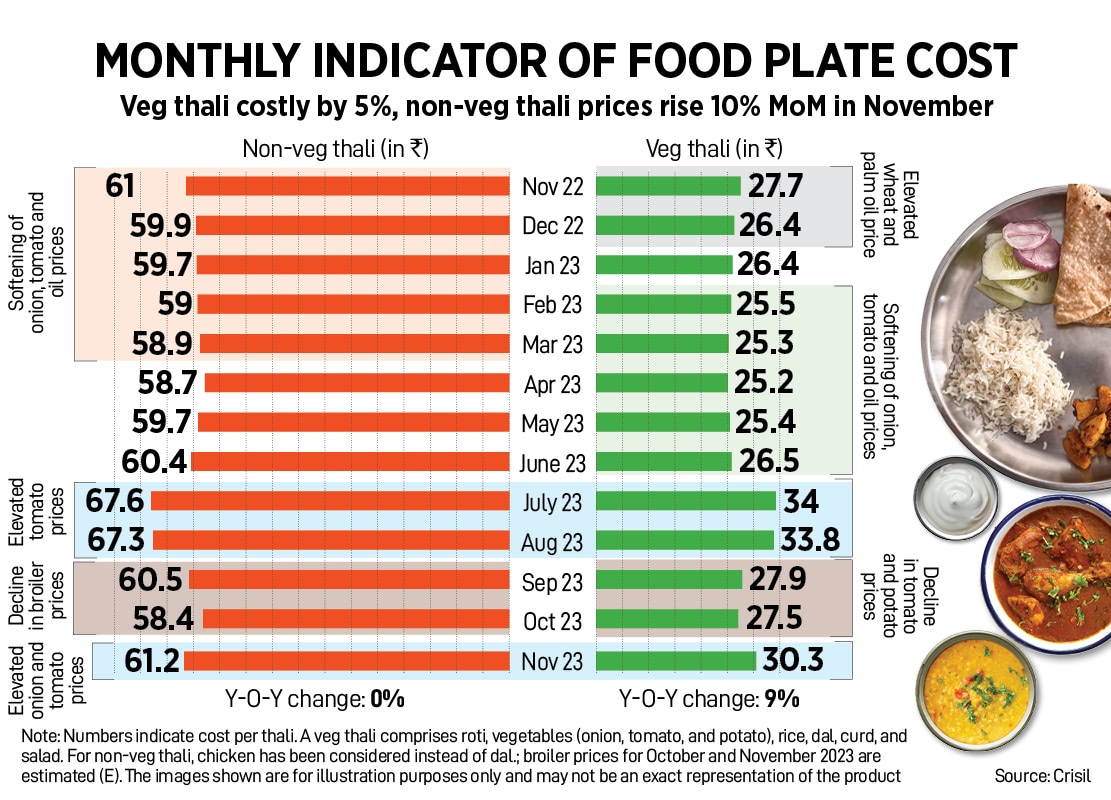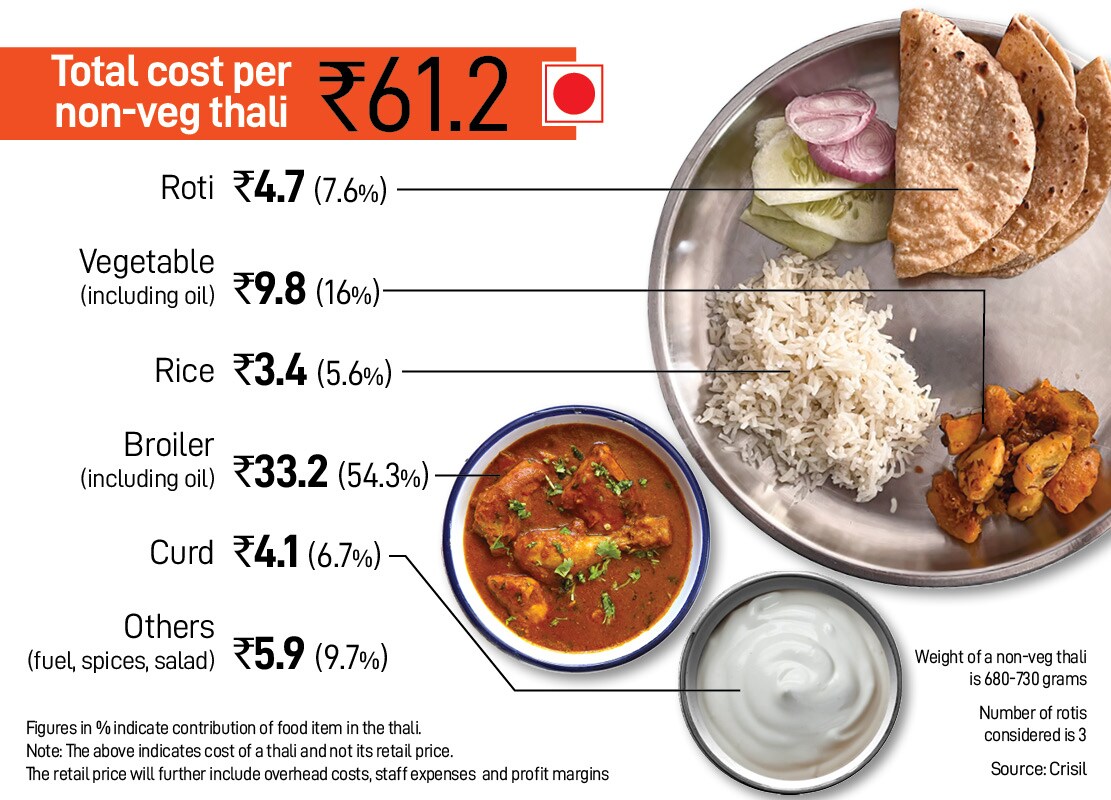
How India Eats: Thali heats up again in Nov, costliest in three months
Raging prices of onion and tomato spike cost of both veg and non-veg thali but decline in broiler chicken prices capped the rise in the latter

After a steady decline in last two months, the cost of thali has risen again in November, mostly due to a steep increase in prices of key ingredients like onion and tomato. However, the overall pace of rise in price of a non-vegetarian thali was slower than the vegetarian one due to a marginal decline in the prices of broiler chicken.
In November, the average price of a vegetarian thali was Rs 30.3, an increase of 10 percent, or Rs 2.80, from previous the month, based on an analysis by Crisil. The same thali cost Rs 27.7 in November last year, indicating a rise of 9 percent, or Rs 2.6.
Prices of both onion and tomato, which surged 58 and 35 percent, respectively, in November from a month-ago period led by festive demand and lower output in the kharif season, led to the spike in thali prices, says Crisil.

However, a marginal fall in broiler chicken prices by 1-3 percent capped the increase in the non-vegetarian thali. Broiler chicken prices account for 50 percent of the non-veg thali cost. In the month, the average cost of a non-vegetarian thali was Rs 61.2, a jump of Rs 2.8 or 5 percent from October. Compared to November last year, a non-veg thali price stayed steady at around Rs 61.








